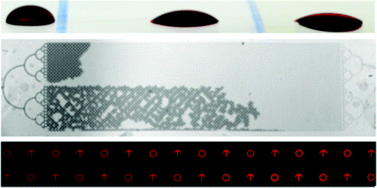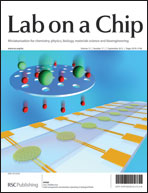We introduce a simple and effective method to tailor the wetting and adhesion properties of thiolene-based microfluidic devices. This one-step lithographic scheme combines most of the advantages offered by the current methods employed to pattern microchannels: (i) the channel walls can be modified in situ or ex situ, (ii) their wettability can be varied in a continuous manner, (iii) heterogeneous patterning can be easily accomplished, with contact-angle contrasts extending from 0 to 90° for pure water, (iv) the surface modification has proven to be highly stable upon aging and heating. We first characterize the wetting properties of the modified surfaces. We then provide the details of two complementary methods to achieve surface patterning. Finally, we demonstrate the two methods with three examples of applications: the capillary guiding of fluids, the production of double emulsions, and the culture of cells on adhesive micropatterns.
You have access to this article
 Please wait while we load your content...
Something went wrong. Try again?
Please wait while we load your content...
Something went wrong. Try again?


 Please wait while we load your content...
Please wait while we load your content...